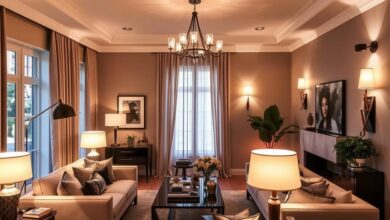Light Balance in Interior Design: How Does Lighting Affect Visual Comfort?
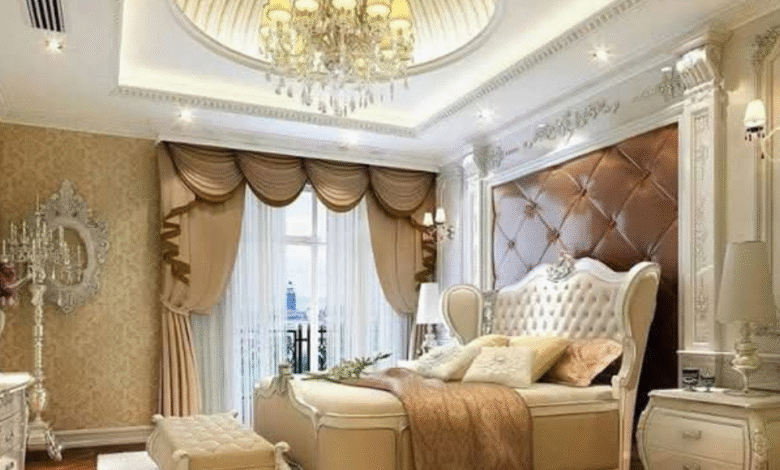
When you enter a room, the lighting catches your eye first. It can change the mood and comfort of the space. Getting the light balance in interior design right in interior design is key to a good experience. It’s about mixing light and darkness in a way that feels right.
Light balance in interior design is more than just looks; it’s about function too. A good lighting system can boost your mood and productivity. In this article, we’ll dive into light balance in interior design and its role in making spaces comfortable.
Table of Contents
Introduction to Light Balance
Light balance in interior design is vital in interior design. It can greatly affect how you feel and interact with a space. By grasping the basics of light balance, you can make a space more welcoming and supportive of your health.
Key Takeaways
- Light balance is essential for visual comfort in spaces
- Achieving the perfect Light balance in interior design can improve your mood and productivity
- Light balance in interior design is about creating a harmonious blend of light and darkness
- A well-designed lighting system can enhance the ambience and functionality of a space
- Understanding the principles of light balance is crucial for creating a comfortable and inviting environment
Understanding the Fundamentals of Light Balance in Interior Design
In Light balance in interior design, natural and artificial lighting are key to a welcoming space. The way lighting affects decoration is crucial. It shapes the room’s look, making it essential to think about light distribution.
Lighting can change how we see a room, making it more inviting. A good lighting plan can make a room feel cosy and comfortable. It’s important to think about the type of light, its strength, and how it spreads.
When planning lighting, consider a few things:
- Task lighting: enough light for tasks like reading or cooking
- Ambient lighting: a warm, welcoming feel
- Accent lighting: highlights design elements or features
By mixing natural and artificial light, you can create a balanced lighting plan. This plan will improve your space’s design and function.
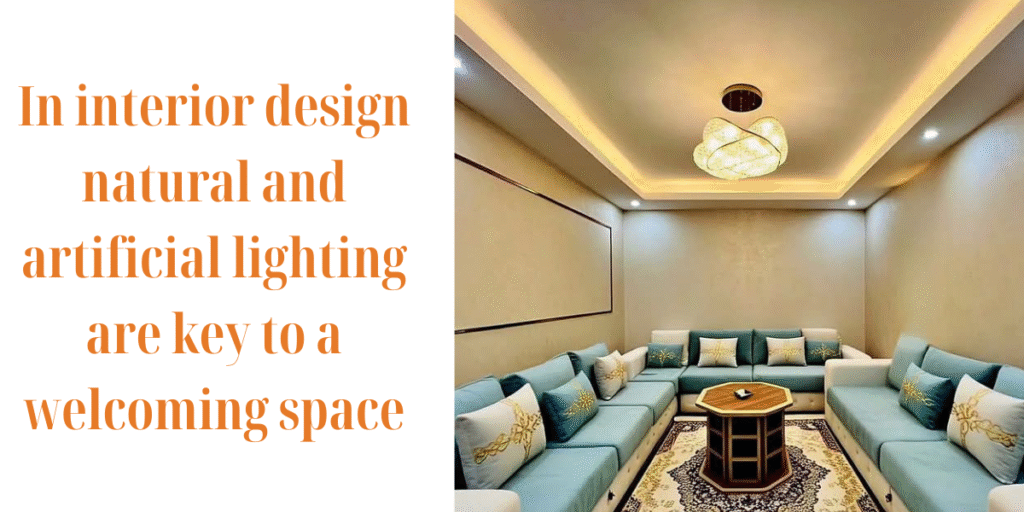
The Evolution of Interior Lighting Design in Modern Homes
Interior design focuses on achieving light balance for comfort. The right lighting can transform a room’s feel. In today’s homes, lighting design is key to the overall look.
Think about the types of lighting for your home. Layered lighting combines different sources for balance. This might include overhead lights, table lamps, and floor lamps.
Key points for Light balance in interior design include:
- Task lighting: enough for reading or cooking
- Ambient lighting: a warm, inviting feel
- Accent lighting: highlights design elements
Knowing about different lighting types helps create a beautiful, functional space. The best lighting meets the homeowner’s needs while ensuring balance and comfort.
Natural Light: Your Most Powerful Design Tool
When designing your home, natural light in interiors is key. It makes your space feel welcoming and boosts your mood. By using more natural light in interiors, you can make your home brighter and more cozy.
To get the most natural light in interiors, think about your windows. Big windows let in more sun, while small ones create a cosy feel. Adding lighting fixtures for balance helps, too, making your space well-lit.
Here are some tips for more natural light in interiors:
- Use mirrors to reflect natural light and make your space feel brighter
- Choose light-colored curtains or blinds to allow more light to filter in
- Avoid cluttering your windows with heavy furniture or decorations
But don’t forget about artificial lighting in homes, too. Mixing natural and artificial light creates a balanced space. With the right lighting fixtures for balance, you can enjoy natural light and adjust it as needed.
Creating Harmony Between Natural and Artificial Light Sources
Creating a balanced and comfortable space is key. It’s important to mix natural and artificial light sources. Ambient lighting can boost natural light, while interior design illumination adds task and ambience light. This mix makes your home welcoming and inviting.
For ambient lighting, think about table lamps, floor lamps, or string lights. They add a warm glow. Dimmers can also adjust light levels for a cosy feel. Interior design illumination comes from overhead lights like ceiling fixtures or chandeliers, offering overall light.
Some important tips for mixing natural and artificial light include:
- Check your space’s natural light and add artificial light when needed
- Use a mix of light sources for a layered effect
- Choose light colours wisely, warm for relaxing areas and cool for workspaces
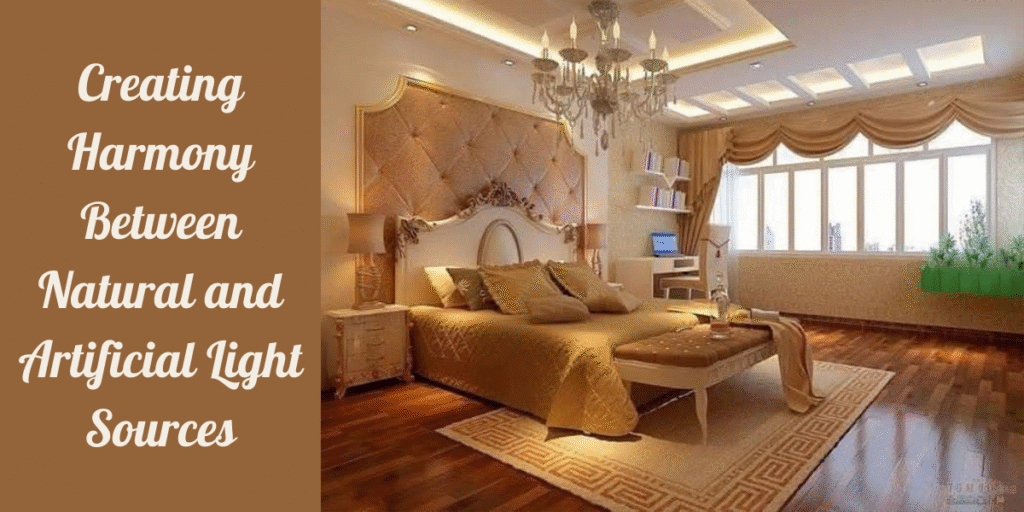
By carefully mixing natural and artificial light, you make your space both useful and lovely. Think about each room’s needs. Use a mix of ambient and interior design lighting for a balanced and harmonious look.
The Psychology of Lighting in Different Spaces
Interior lighting design is all about the psychology of different spaces. You aim for a mix of function and comfort. The right lighting can greatly affect your mood in a room. For instance, soft, warm lights in a bedroom help you relax, while bright, cool lights in a workspace boost your energy.
Bedroom Lighting
A well-lit bedroom is a cosy retreat. Table lamps or floor lamps with soft shades can make it warm and welcoming. Adding string lights or fairy lights can also bring a magical feel to the room.
Living Area Lighting
A living area should blend natural and artificial light beautifully. Use a mix of overhead lights, table lamps, and floor lamps for balanced lighting. Warm white bulbs create a cosy vibe, while cool white bulbs energise the space.
Workspace Lighting
Good lighting in a workspace boosts productivity and reduces eye strain. LED bulbs with a high colour temperature (around 5000K) are best for focus. Task lights, like desk lamps, provide extra light where needed.
Understanding the psychology of lighting in various spaces makes your home both functional and stunning. Use eye-friendly lighting, balanced decoration, and thoughtful interior design to enhance well-being and productivity.
Smart Lighting Solutions for Contemporary Interiors
When thinking about light balance in your home, smart lighting is key. It changes the mood and feel of a room. Now, you can control your home’s lighting easily, making it both balanced and comfortable.
Choosing the right lighting colour is crucial for balance. Different colours can make a room feel warm or cool. This choice helps make your space welcoming and useful.
Some top smart lighting options include:
- Smart light bulbs that can be controlled remotely
- Lighting systems that can be integrated with home automation
- Energy-efficient lighting options that can help reduce energy consumption
Using these smart lights can make your home look great and save energy. Finding the right light balance is key to a cosy and harmonious home. The right lighting can make your space perfect for relaxing, having fun, or working.
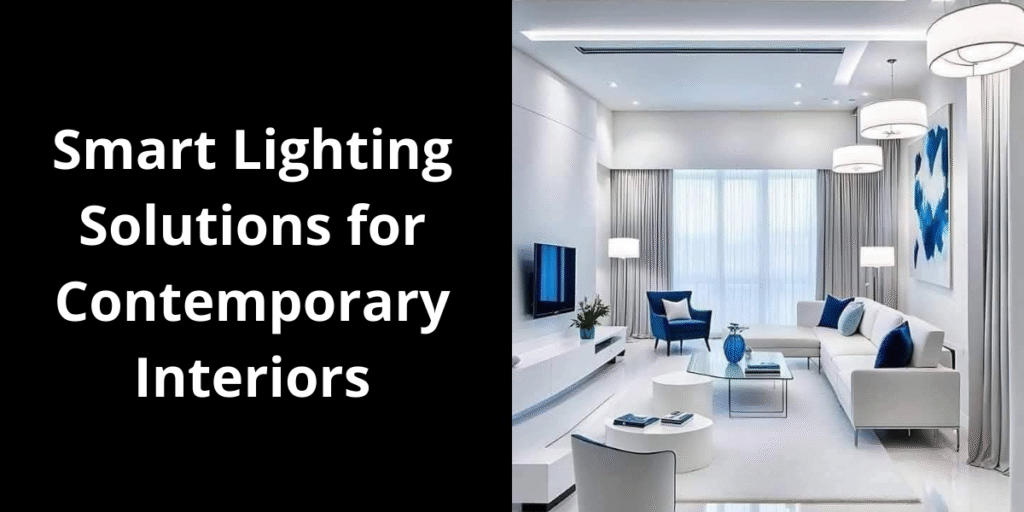
When looking at smart lighting, think about what you need and like. The right lighting can make your home reflect your style and needs. Investing in smart lighting can turn your home into a modern, stylish, and functional space.
Colour Temperature: The Key to Perfect Light Balance
Colour temperature is key in interior design for perfect light balance. It shows the warmth or coolness of light, measured in Kelvin (K). Knowing about colour temperature helps create a balanced space with both natural and artificial light.
Understanding Colour Temperature Options
There are many colour temperature options, each with its look. These include warm white (2700 K- 3000 K), soft white (3000 K- 3500 K), bright white (3500 K- 4100 K), cool white (4100 K- 5000 K), and daylight (5000 K- 6500 K). Choosing the right colour temperature makes your space look good and work well, blending natural and artificial light.
Choosing the Right Colour Temperature for Your Space
When picking a colour temperature, think about the room’s use and light. Warm white (2700 K- 3000 K) is great for cosy areas like living rooms and bedrooms. Cool white (4100 K- 5000 K) is better for bright spaces like kitchens and bathrooms, enhancing both natural and artificial light.
Understanding colour temperature helps you pick the best option for your space. This way, you get a light balance that’s both beautiful and functional. It combines natural and artificial lighting for the perfect ambience.
Common Lighting Mistakes and How to Avoid Them
Lighting is key in interior design. It greatly affects a space’s look and feel. To get it right, think about how light spreads in your home.
Some common errors include using too little or too much light. Also, placing lights wrong and picking the wrong light bulb colour. Here are some tips to steer clear of these mistakes:
- Use a mix of overhead lights, table lamps, and floor lamps for a layered look.
- Put lights in places that make light spread evenly and nicely in your home.
- Pick light bulbs that match your decor and the space’s purpose.
By avoiding these common mistakes, you can make a space that’s both useful and lovely. It will have a balanced lighting effect.
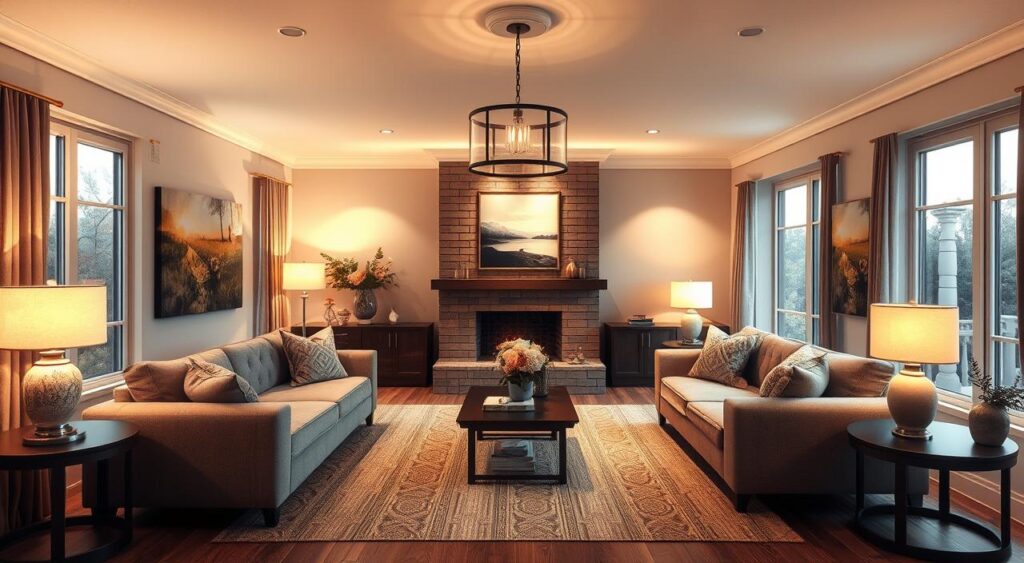
Sustainable Lighting Practices in Modern Design
Creating a comfortable home involves more than just good lighting. It’s also about being kind to the environment. Think about using energy-efficient lights to reduce your carbon footprint. This is a smart choice for your home’s design.
LED bulbs are a great option because they use less energy and last longer than old bulbs. Smart lighting systems are also a good idea. They let you control the lights from anywhere, adjusting them to your liking.
Choosing lights that are good for the planet is key. Look for ones made from sustainable materials. Making a few changes can make your home more eco-friendly. This improves your life and helps the environment.
- Energy efficiency
- Material sustainability
- Manufacturer’s environmental policies
By doing your research, you can find lights that are both good for your home and the planet. This way, you get the best of both worlds in your interior design.
Professional Tips for Achieving Perfect Light Distribution
Interior lighting design is all about balancing natural and artificial light. A good lighting plan can change how a room feels and works. Start by checking how much natural light your space gets. Then, add artificial lighting to make it even and comfortable.
It’s key to mix natural and artificial light in your design. Use mirrors and reflective surfaces to spread natural light. Sheer curtains or blinds can also help soften the light and cut glare. For artificial light, mix overhead, table, and floor lamps for a layered look.
Here are some expert tips for perfect light distribution:
- Use a mix of warm and cool light sources for a unique atmosphere.
- Install dimmers to adjust light levels and make your lighting flexible.
- Think about the colour temperature of your light sources. Choose bulbs that match your space’s natural light.
By using these tips, you can make a lighting plan that’s both beautiful and functional. It will make your space more inviting and comfortable.
Conclusion: Creating Your Perfectly Balanced Lighting Design
Light balance in interior design is key for comfort and harmony in your home. By learning about light and how it affects us, you can design a perfectly balanced lighting design. This will make your home look better and work better, too.
A good lighting plan does more than just light up a room. It mixes natural and artificial light sources for a beautiful look. Try out different light colours, pick energy-saving lights, and steer clear of common mistakes. This way, your space will be stunning and eco-friendly.
With the right lighting, your home can become a cosy and inspiring place. The right light balance brings warmth, calm, and creativity. Use lighting design to make your home the best it can be.


